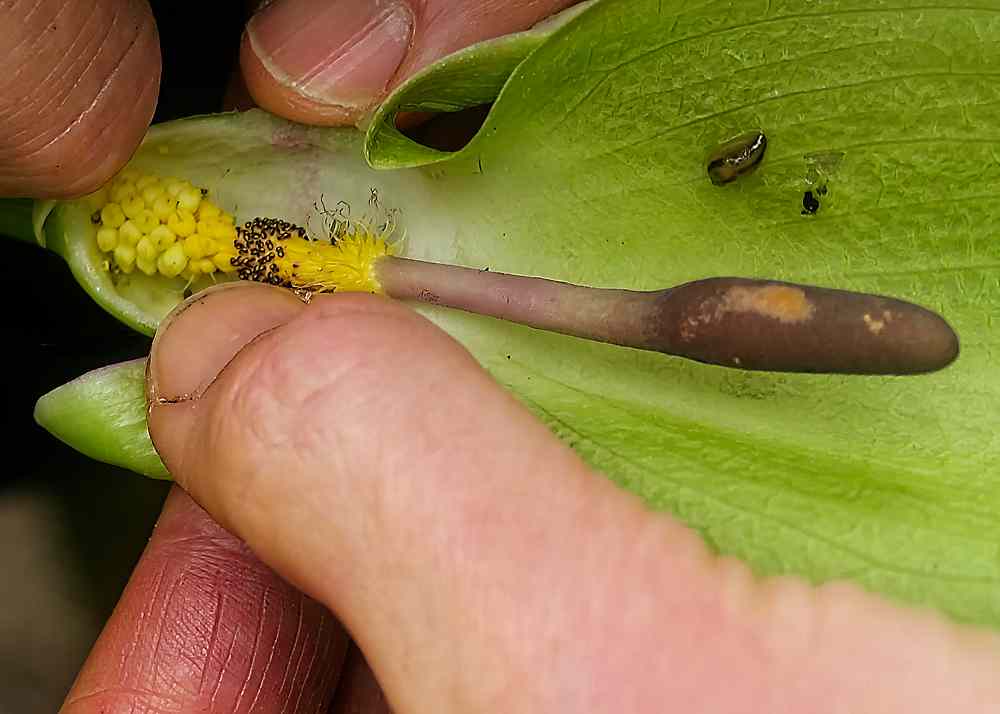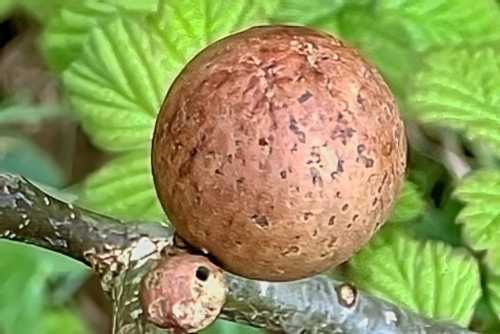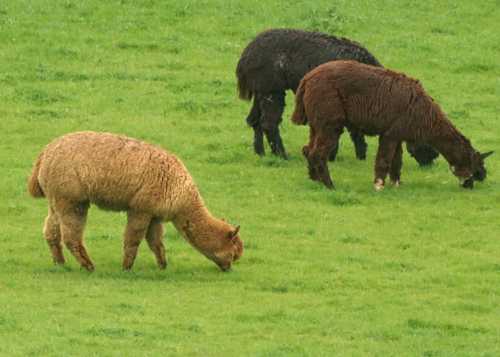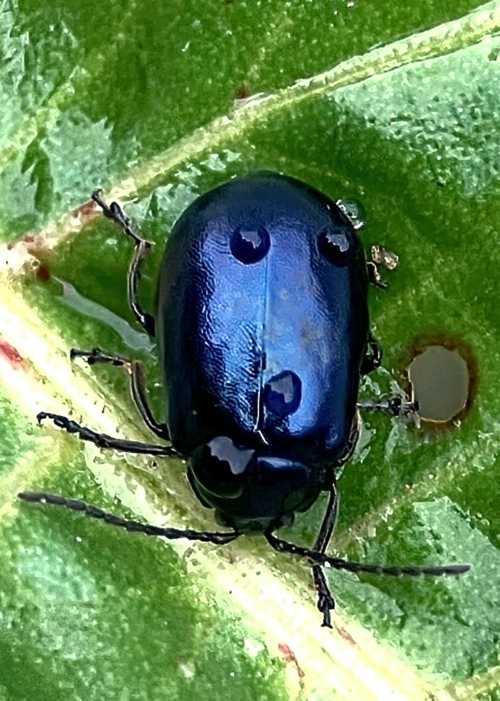Leader Helena Crouch
A dozen BNHS members met in the pleasant churchyard of the Church of St Mary, Compton Dando. From there we crossed the River Chew on a pedestrian bridge then joined the Forest Community Walk, through some woodland with a carpet of wild garlic, wood anemones and bluebells.
The walk through the woodland involved a short, sharp ascent.
We stopped to hear Helena Crouch explain how Lords and Ladies achieve pollination. Helena split open a sample of the plant. Once the ripe clubbed shape spike (spadix) warms up it emits a smell that attracts flies. Once the flies land they slip down into a chamber at the flowers base. The flies are trapped by downward pointing hairs until they have pollinated the tiny flowers within. Once they have done this they are allowed to escape. In the autumn a spike of bright orange berries can be a common sight.

Lords and Ladies examined © Andrew Harrison
Also within this wooded area birds like Blackcap, Great Spotted Woodpecker (drumming) and Green Woodpecker (yaffling) were heard. The Blackcap, described by the poet John Clare as the March Nightingale, proved to us why its song is amongst the most popular of our songbirds. One account of the song describes its effervescent quality, vaguely similar to that of a Blackbird though briefer and faster. The association with the Nightingale is a wonderful accolade for its singing prowess and the quality of its song. It simply outclassed the other species of birds singing.
Once we left the wooded area a pair of Mistle Thrushes were clearly seen by us all before they flew into the wooded area we had just left. Not to be outdone, a Wren made its presence known singing very loudly.

Oak Gall © Amdrew Harrison

Alpacas at Woollard © Andrew Harrison
There were also some excellent examples of Oak Galls. These are created when wasps lay eggs in the young tissues of a tree and the tree responds by wrapping protective material around the injury and the eggs. This also provides a cocoon for the developing larvae.
The Oak Gall has another use that nature had not intended. This can lead to the question: What do Magna Carta, the American Declaration of Independence and Jane Austen’s Pride and Prejudice have in common? They were all written in Oak Gall ink. Ink from crushed Oak Gall has been traced back to Roman times and was still in use during the 20th century. Its indelible properties made it very useful for legal documents.
We were told that the unimproved grassland is ideal for plants like Red Campion, Wood-rush and Yarrow which Helena pointed out to us, still in their very early stages of growth. We also saw examples of the Cuckoo flower as we started our descent towards Woollard. Later in the year when these wildflowers are more mature hopefully this grassland will be populated with many butterflies.
Just before heading into Woollard we passed a number of Alpacas, then diverted into a lane where four species of ferns were inspected. Helena said that in January the ground surrounding the rough lane produced a spectacular show of Snowdrops.
When passing through Woollard one of our party could not resist buying a goose’s egg which could well make a most interesting omelette!

Alder Leaf Beetle © Amdrew Harrison
On one of the buildings in Woollard was a mark showing the height of the floods of the 10-11 July 1968. The mark was way above us. Not surprisingly the Woollard bridge was one of many swept away by the 1968 River Chew floods.
After walking a short stretch of the road to Hunstrete we branched off to walk along a path, at times very muddy, back to Compton Dando. Birds like Willow Warbler and the Chiffchaff were recorded and Alvan White came across an Alder Leaf Beetle. It often pays to walk at the pace of a snail.
Our thanks must go to Helena Crouch for leading this walk. Her enthusiasm and great knowledge added so much to an enjoyable day that the weather could not dampen.
Andrew Harrison


Recent Comments